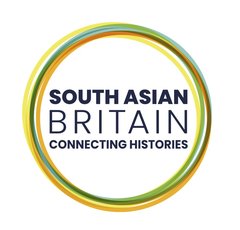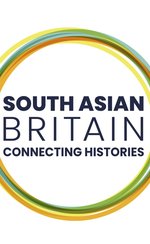Place of event
Middlesbrough
About
During the mid-twentieth century, Cannon Street in Middlesbrough was home to labourers who worked for the bridge manufacturer Dorman Long, a major employer in the town, as well as other working-class people who needed cheap housing. On 18 August 1961 John Joseph Hunt, who was associated with the Teddy boys, was stabbed by a Yemeni sailor named Hassan Said. This triggered four days of rioting on Cannon Street by the victim's supporters, as they targeted immigrant and racialized minority groups, the majority of whom were Pakistani.
The rioting took place in and around the Taj Mahal Café on Cannon Street, which was owned by a Pakistani businessman named Mr Meah and his English wife. The cafe was set on fire by rioters on 18 August, as those inside hid in cupboards. The riots were a culmination of hostilities which had manifested in multifarious ways across the summer of 1961. The cafe, for example, had been subjected to attacks since its opening on 31 July, and on 18 July a Pakistani landlord was attacked by a mob after evicting his white tenants.
According to Middlesbrough Police’s Chief Constable, mobs of five hundred people gathered on Cannon Street to attack local businesses and the police during the peak of the riots, although the Guardian reported that thousands were involved in the disturbances. Some racialized minority residents whose properties were targeted left Middlesbrough for neighbouring towns, intending to return once the riots were over.
Shenaz Usman’s family had been in Middlesbrough since the 1950s. Her father returned to Pakistan for a short period, after which he migrated to Middlesbrough in 1958 with his wife and children, including 2-year-old Shenaz. Her father opened the first halal butchers in Middlesbrough on Cannon Street, and Shenaz’s family lived close by on Grange Road. In an interview for the project 'One Suitcase', Shenaz recalled her experiences of the riot and said ‘brown people’ were specifically targeted. She remembered how her South Asian neighbours hid in one house, and that her mother was among those boarding up the windows. She described the house as dark and dingy, and how those hiding stayed in the house until the riots were over. Similarly, Shenaz’s husband Tariq, who was 11 years old when the riots took place, remembered how the rioters drove past homes on Russell Street, where several Pakistani families lived, and broke their windows. His extended family hid in his house. Tariq recalled that although his father and uncles had been in Middlesbrough for over a decade, they thought the riots were an attempt by locals and the government to remove them from Britain, particularly given that the police made no effort to protect them against racist violence.
On 22 August 1961 sixteen men were imprisoned for their involvement in the disturbances and fifteen policemen were reportedly injured. The characterization of the riots as racist was disputed in national media. Newspapers such as Middlesbrough’s Evening Gazette did not reference race at all when reporting on the riots, whilst publications such as the Daily Mail and Guardian explicitly described the event as race riots or a racial dispute. The journalist Christopher Brasher wrote in the Observer that the riots did not originate from racism and were never ‘truly racial’, since the racialized minority population of Middlesbrough was small and primarily composed of South Asians and Arabs, and that no ‘coloured’ men were hurt. Historian Charlotte Lydia Riley argued that the stereotype of West Indian immigrants as being ‘troublesome’ was so pervasive that their absence in the riots was enough for journalists such as Brasher to argue that race was not a motivating factor.
Taj Mahal Café, Teddy boys.
John Joseph Hunt, Hassan Said.
Panayi, Panikos, ‘Middlesbrough 1961: A British Race Riot of the 1960s?’, Social History 16.2 (1991), pp.139–53
Riley, Charlotte Lydia, Imperial Island: An Alternative History of the British Empire (London: Vintage, 2024)
Taylor, David, ‘The Middlesbrough Race Riot of 1961: A Comment’, Social History 18.1 (1993), pp. 73–9
'Race Rioters Fight Police', Daily Mail (21 August 1961)
'Race Riots Flare Up Again’, Daily Mail (22 August 1961)
'Thirty-Five Men, One Woman Face Boro' Court', Evening Gazette (22 August 1961)
'"Thugs" Blamed for Riots: 16 Sent to Prison’, Guardian (22 August 1961)
Our Own Reporter, ‘Police Again Use Batons in Middlesbrough: Prejudice Created by Violence’, Guardian (22 August 1961)
HO 325/20, Alleged race riots in Middlesbrough, August 1961: local police report; press cuttings, National Archives, Kew, UK
Brasher, Christopher, ‘Nothing Racial in This Riot: "FUN" in Cannon Street’, Observer (27 August 1961)
U/PAT/7/3, Lye Pattison Collection: Evening Gazette reports the race riots in Cannon Street, Middlesbrough, Teesside Archives, Middlesbrough
One Suitcase Project, Shenaz Usman, 11 October 2022, interview by Miki Rogers, Teesside Archives, Middlesbrough
One Suitcase Project, Tariq Usman, 11 October 2022, interview by Miki Rogers, Teesside Archives, Middlesbrough
Banner image credit
The Dome Hospital [Brighton], 1915, H D Girdwood Collection, Shelfmark: Photo 24/1, Courtesy of British Library Board, Usage Term: Public Domain
Image credit
© Remaking Britain: South Asian Connections and Networks, 1930s – present


